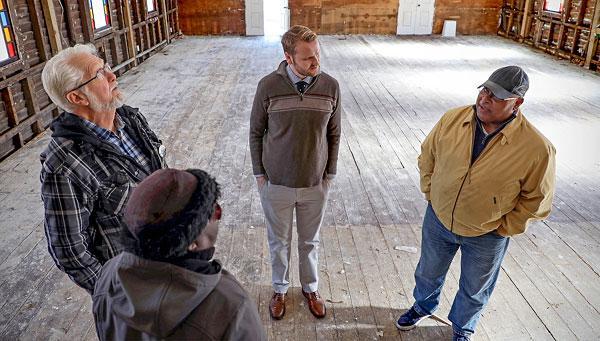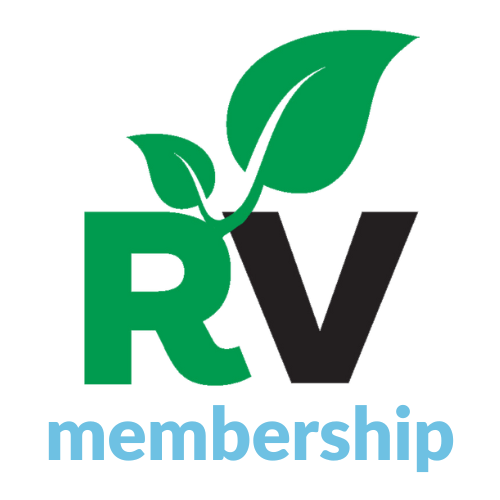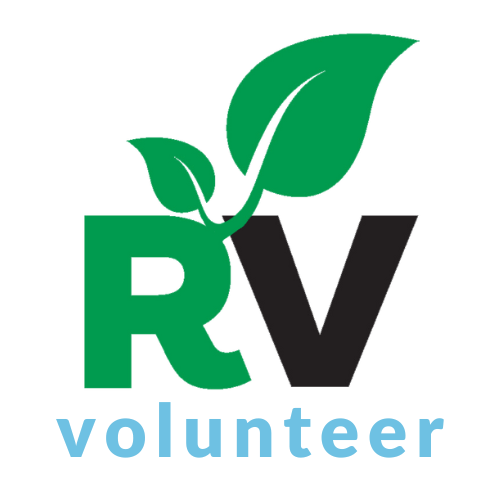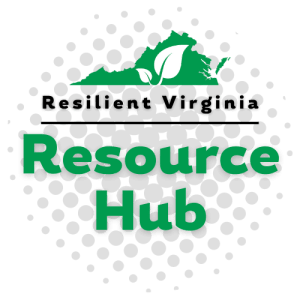- Environment, Energy, Equity, Economics and More! Plenary Videos from 2019 Resilient Virginia Conference
- Highlights from the Virginia Clean Energy Summit
- Resilience Funding Announcement
- Introducing Resilient Virginia’s 2019–2020 Board of Directors
- Reflections from Annual Sponsor Clark Nexsen
- Report from Charlottesville
- Volunteer Position Open
- Resilient Events Calendar
- Membership: Special Offer for Limited Time!
What’s New
Environment, Energy, Equity, Economics and More — Plenary Videos from 2019 Resilient Virginia Conference Now Available!
By Tracy Garland, Events and Social Media Director, Resilient Virginia
We are pleased to let you know that the Plenary Presentations from the 2019 Resilient Virginia Conference, held at the UVA Darden School of Business on July 17–18, are now available.
Plenary Session 1: Setting the Stage — Addressing Challenges and Finding Solutions
Guest Speakers:
Joshua Saks, the Deputy Secretary of Natural Resources for Virginia, gave an overview of resiliency challenges facing the Commonwealth and actions being taken at the state level. He explained that initiatives like the Resilient Virginia Conference, the creation of his Deputy Secretary position, and the Governor’s appointment of a new Special Assistant for Coastal Adaptation and Flooding Resilience will help in moving the Commonwealth forward. He also highlighted Governor Northam’s Executive Order 24: Increasing Virginia’s Resilience to Sea Level Rise and Natural Hazards.
Karen McGlathery, Ph.D., Director of the Environmental Resilience Institute (ERI) and Professor at UVA’s Department of Environmental Sciences, gave an overview of ERI’s work in resiliency, including supporting interdisciplinary research team projects, building partnerships that translate research to action, and training the next generation of leaders. She then detailed their work in three focus areas: climate resilience, water and energy futures, and environment and health.
Brad Townsend, Senior Solutions Fellow and Innovation Director for the Center for Climate and Energy Solutions outlined their organization’s Climate Innovation 2050 project, which works with more than two dozen large companies to examine potential pathways toward decarbonizing the U.S. economy. Principal outputs have included a policy brief of bipartisan solutions for the federal level; a report of three alternative scenarios for reducing greenhouse gas emissions by 80% by 2050, and a comprehensive strategy of high-priority policies and business actions to be released in late 2019.
Jane English, Program Manager of Environmental and Climate Justice at the NAACP, described the program’s three key objectives: reduction of harmful emissions; advancing clean and efficient energy, and strengthening community resilience and climate adaptation. The organization is working throughout the NAACP’s 2,200 branches in the US to create community Environment and Climate Justice Committees. She described how different populations are impacted differently by climate change, and how NAACP is working to help groups like people of color, the elderly, low income and LGBTQ, bring their voices to the decision-making tables, and to provide information to communities on how to survive the impacts of climate change.
And you can view these additional videos:
Plenary Session 2: Rural and Urban Resiliency — A Dialogue on Interdependence
Speakers:
Jonah Fogel, Program Manager, Environmental Resilience Institute, UVA (Moderator)
Hamilton Lombard, Research Specialist at UVAs Weldon Cooper Center for Public Service
Amy Thompson, AICP, LEED AP ND, Senior Planner, Perkins + Will
Jon Penndorf, FAIA, Sustainability Leader, Perkins + Will
Anthony Flaccavento, Founder and President of Sequestering Carbon, Accelerating Local Economies (SCALE)
Plenary Session 3: Moving Virginia Forward — Policy and Program
Speakers:
Jewel Bronaugh, Commissioner, Virginia Department of Agriculture and Consumer Affairs
Chris Wiegard, Virginia Co-Coordinator, Citizens Climate Lobby
Karen Campblin, Co-Chair, Virginia’s Green New Deal
Karla Loeb, Chief Policy and Development Officer, Sigora Solar
Plenary Session 4: Resilience Progress — Virginia and the Region
Speakers:
Steve Walz, Environmental Program Director, Metropolitan Washington Council of Governments
Susan Elliott, Climate Protection Program Manager, City of Charlottesville
Andrea Trimble, CEM, LEED AP BD+C, O+M, Director, UVA’s Office of Sustainability
Narissa Turner, Climate Program Coordinator, Albemarle County
Ben McFarlane, AICP, CFM, Senior Regional Planner, Hampton Roads Planning District Commission
![]()
Highlights from the VA Clean Energy Summit
The Virginia Clean Energy Summit, held September 17 in Richmond, was a definitive success, not only by being the first clean energy conference in the state, but also because it brought together over 400 attendees. The conference highlighted current opportunities and directions needed to accelerate the use of more energy efficiency, solar, wind, storage, electric vehicles, and other clean energy solutions in the Commonwealth.
The conference was co-hosted by MDV-SEIA, Resilient Virginia, Virginia AEE, VAEEC, and VA-REA, with supporting roles from the JMU’s Office for the Advancement of Sustainable Energy, the VA DMME, and Viridiant.
Notably, the keynote address by Governor Ralph Northam featured the announcement of Executive Order 43, which supports his goals of reducing environmental impact, mitigating the impacts of climate change, and boosting the clean energy economy in Virginia.
From the press release: The Executive Order lays out Virginia’s objectives for statewide energy production, which includes the goal that by 2030, 30 percent of Virginia’s electric system will be powered by renewable energy resources and by 2050, 100 percent of Virginia’s electricity will be produced from carbon-free sources such as wind, solar and nuclear. The path forward includes ensuring at least 3,000 megawatts of solar and onshore wind are under development by 2022, and that up to 2,500 megawatts of offshore wind are fully developed on an accelerated timeline by 2026.
Breakout session speakers’ presentations on a range of timely topics are available on the conference website.
The conference also resulted in an Energy News Network article featuring Annette Osso, Resilient Virginia Managing Director, who shared comments on the conference’s positive results, along with the need for accelerated clean energy initiatives and resiliency planning throughout the state. Read the interview by journalist Elizabeth McGowan here.
![]()
Resilience Funding Announcement
The National League of Cities 2020 Leadership in Community Resilience program is now accepting applications from cities seeking additional funding for resilience-related projects. Each city selected for the 2020 cohort will receive $10,000 in financial support, advisory services and a site visit from NLC staff, as well as an invitation to NLC’s annual resilience summit for the city’s mayor and a staff member. Apply here! The deadline for applications is December 20, 2019.
![]()
Welcome to Resilient Virginia’s 2019–2020 Board of Directors
NEW OFFICERS
Co-Chairmen
Andrew V. “Andy” Sorrell
Deputy Director, Virginia Tobacco Commission
Steve Sunderman, RA, LEED AP BD+C, BPI
President, Terrazia PC
Vice Chair
Ellen Graap Loth
Principal, Cardno, Inc.
Secretary
Jennie DeVeaux
Senior Executive Consultant for Resilience at Witt O’Brien’s
Treasurer
Vestal Tutterow, PE, CEM
Program Manager, Lawrence Berkeley National Laboratory
DIRECTORS
William Bohn, Chief Operating Officer, SOBIS, Inc.
Lisa Jeffrey, PE, Senior Associate, Hazen
Rebecca Joyce, Community Program Manager, Central Shenandoah Planning District Commission
Erin Sutton, MS, CEM, PMP, Director, Office of Emergency Management, City of Virginia Beach
And “Thank You” to Departing Board Members
Nell Boyle, LEED AP, Sustainability Coordinator, City of Roanoke
Jerry Eastridge, LLA, BPI, Principal, GSPH LLC
Jane Frantz, AICP, PMP, CFM, Associate Vice President, Dewberry
Find more information about Resilient Virginia Board Members here.
![]()
Reflections on Sea Level Rise and Climate-Induced Migration
Editor’s Note: Resilient Virginia invites Annual Sponsors to write guest articles for the newsletter and website. We thank Clark Nexsen, a Community Leader Annual Sponsor, for giving permission to reprint an article by Graduate Fellow, Zane Havens.
Design Thinking: How My Resiliency Fellowship Changed My Definition of a Resilient Future
by Zane Havens
When I began my one year resiliency fellowship, I expected to explore how innovative technologies could support a resilient future in coastal zones. Perhaps unavoidably, I approached my work initially with certain preconceived notions about how static structures, infrastructure, and other design methodologies could and would impact what our communities look like in 200 years.

Photograph by Aileen Devlin, courtesy of Virginia Sea Grant. As part of Zane’s research, he visited communities impacted by coastal flooding, including this Princeville, NC church that was destroyed by hurricane flooding. From left to right: Tom Duckwall, Buoyant Foundation Project; Janice Bulluck, Radicue Primitive Baptist Association; Zane Havens; and Deacon William Taylor, Radicue Primitive Baptist Association.
Today, a year later, my resiliency journey has taken me to a very different place with different views on what a resilient future looks like. My understanding of how institutional resiliency — meaning the ability of our governing institutions to adapt to disturbance through policy and changes in management practices — impacts a sustainable coastal future has evolved significantly. That’s not to say I don’t have some innovative or potentially even radical ideas about resilient design in the coastal setting — I certainly do — but I have a new awareness of and appreciation for the fact that an inevitable change is coming for coastal communities.
The simple and painful reality is that one day in the future, a migration of the general population from current coastal areas to less flood-prone, inland environments will be forced upon us. It can be hard to effectively visualize what the future looks like when it won’t impact you personally — and perhaps won’t impact your children, grandchildren, or even great-grandchildren. However, while we may not know precisely how drastic sea level rise will be and when, the recurrent and increasingly frequent nature of coastal flooding is our first clue that in 100, 150, or 200 years, our coastal communities will look very different because we will have no choice but to live a different way.
The question I’m most compelled by is how to create a “pull” factor that can incentivize migration from high-risk coastal areas to safer, more sustainable communities, and achieving this in a way that utilizes the gradual development of opportunity in elevated locations, rather than sudden coastal catastrophe, as the driver for migration.
…
We need a dual approach — investing wisely in making the infrastructure we’ll need (ports, critical and emergency services, etc.) more resilient — while also communicating that protecting and preserving will not permanently stave off this change. We need a new way of living. My future white paper will explore this concept in greater detail, but for now I pose the central question outward — how do we form a pull driver compelling enough to draw our coastal population to safer, more resilient ground?
(This is an excerpt from the longer article which can be read here.)
 Zane Havens, Resiliency Graduate, has dedicated the last year to researching coastal resiliency through a fellowship sponsored by the Virginia Sea Grant and host organization Clark Nexsen. He holds a Bachelor’s in Earth Science from Albion College and is currently pursuing a Ph.D. in Environmental Science from the University of Virginia.
Zane Havens, Resiliency Graduate, has dedicated the last year to researching coastal resiliency through a fellowship sponsored by the Virginia Sea Grant and host organization Clark Nexsen. He holds a Bachelor’s in Earth Science from Albion College and is currently pursuing a Ph.D. in Environmental Science from the University of Virginia.
Clark Nexsen regularly collaborates with the Virginia Joint Subcommittee on Coastal Flooding, the ODU Center for Coastal Resilience (CCRFR), the Virginia Sea Grant and the Hampton Roads Planning District Commission’s (HRPDC) Coastal Resilience Subcommittee to analyze coastal flooding in Hampton Roads and advise on legislation, policy, and practice toward the planning and design of resilient infrastructure. Currently, Clark Nexsen is evaluating proposed building requirements for finished floor elevations for all state owned buildings to account for sea level rise. This was a result of Governor Ralph Northam’s Executive Order #24, “Increasing Virginia’s Resilience to Sea Level Rise and Natural Hazards,” which is scheduled to be released in the next few months.
![]()
Report from Charlottesville: A Guest Article Featuring a Regional Climate Coalition
By Marcia Geyer, Vice-Chairperson, Cville100
Charlottesville breeds a seemingly endless variety of groups organized around any subject, including resistance to climate change. At the November 2017 meeting of 350 Central Virginia, we accepted Joanie Freeman’s challenge to get our movement out of silos, communicating and collaborating. Out of the outreach was born the Cville100 climate coalition (100 for a fossil free mission), originally with seven member organizations, now with 15, and growing rapidly again as the climate crisis becomes a hot topic.
 Fairly soon after formally organizing, a second priority was added to communication and collaboration: becoming a conduit for our members to work with and support the City of Charlottesville and County of Albemarle on passing each of their commitments to GHG reduction goals that meet the minimums required to avoid the worst effects of climate change.
Fairly soon after formally organizing, a second priority was added to communication and collaboration: becoming a conduit for our members to work with and support the City of Charlottesville and County of Albemarle on passing each of their commitments to GHG reduction goals that meet the minimums required to avoid the worst effects of climate change.
More recently, a third priority has emerged, that our local coalition is only at the beginning of fulfilling: to greatly expand the number of climate activists so that we become a critical mass that reaches a tipping point of leverage for making the many, sometimes difficult changes to avoid further escalating the climate crisis. Personally, as a movement person, I’ve been here before — as a college student and campus leader during the civil rights movement of the ’60s. To me it feels very like 1962, about 18 months before the August 1963 March on Washington that brought together a wide spectrum of organizations to become a powerful, unified movement. That’s where we are going and need to go. Together.
One outreach tool several of us created for Cville100 coalition members, and now share with you to use with relatively uninformed audiences, is an 18 minute video about the known health effects of climate change, focused as closely as data was available on Charlottesville. We invite you to view and share the following video: https://www.youtube.com/watch?v=_rh8oFecY6Y.
Like Cville 100 Facebook Page at facebook.com/cville100coalition/
![]()
Volunteer Position Open!
“CALENDAR EVENT VOLUNTEER” — Your important job is to keep the Resilient Virginia calendar up-to-date with the latest listings of Virginia and national resiliency events, and to alert people to the valuable webinars available that range from resilient building design to emergency management to carbon neutral cities to regenerative agriculture. Help us spread the word on these important resiliency issues and events. Contact Annette Osso (osso@resilientvirginia.org) if you would like to become the next “Calendar Event Volunteer.”
Resilience Events Calendar
Here are some highlights of events happening this Fall.
November 14, 2019: VA Energy Efficiency Council Fall Forum. Register here.
November 15, 2019: The Three Ps of Resilience: Planning, Partnerships, and Paying for It All, William and Mary Virginia Coastal Policy Center 2019 Conference. Find out more and register here.
November 16, 2019: Fourth Annual Solar Congress, Solar United Neighbors. Find out more and register here.
![]()
Membership
Turn Over a New Leaf — Join or renew today!
Support Resilient Virginia’s Goals
*Inform *Educate and *Activate
Virginia communities and help them build resiliency to ensure continued prosperity, national security, and climate change adaptation.
You can help by:
Becoming a Member
Signing on as an Annual Sponsor
Continue your support throughout the year by using one or both of these online shopping sites that contribute to Resilient Virginia:
 If Amazon is your online shopping choice, go to Smile.Amazon.com and designate Resilient Virginia and we will receive a donation with every purchase.
If Amazon is your online shopping choice, go to Smile.Amazon.com and designate Resilient Virginia and we will receive a donation with every purchase.
 Find lots of discounts and many participating stores for office supplies, general shopping, and special event gifts.
Find lots of discounts and many participating stores for office supplies, general shopping, and special event gifts.





